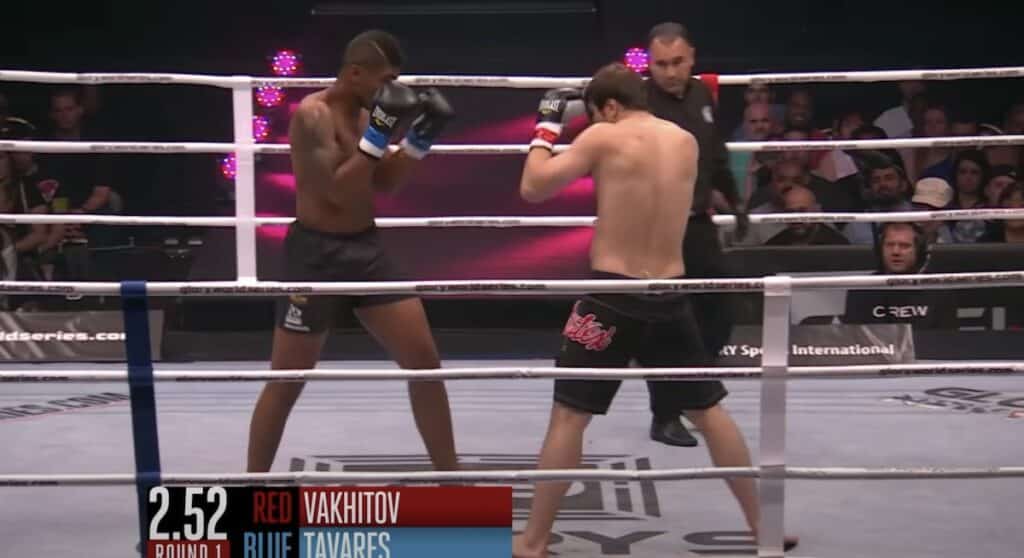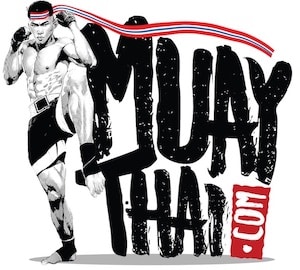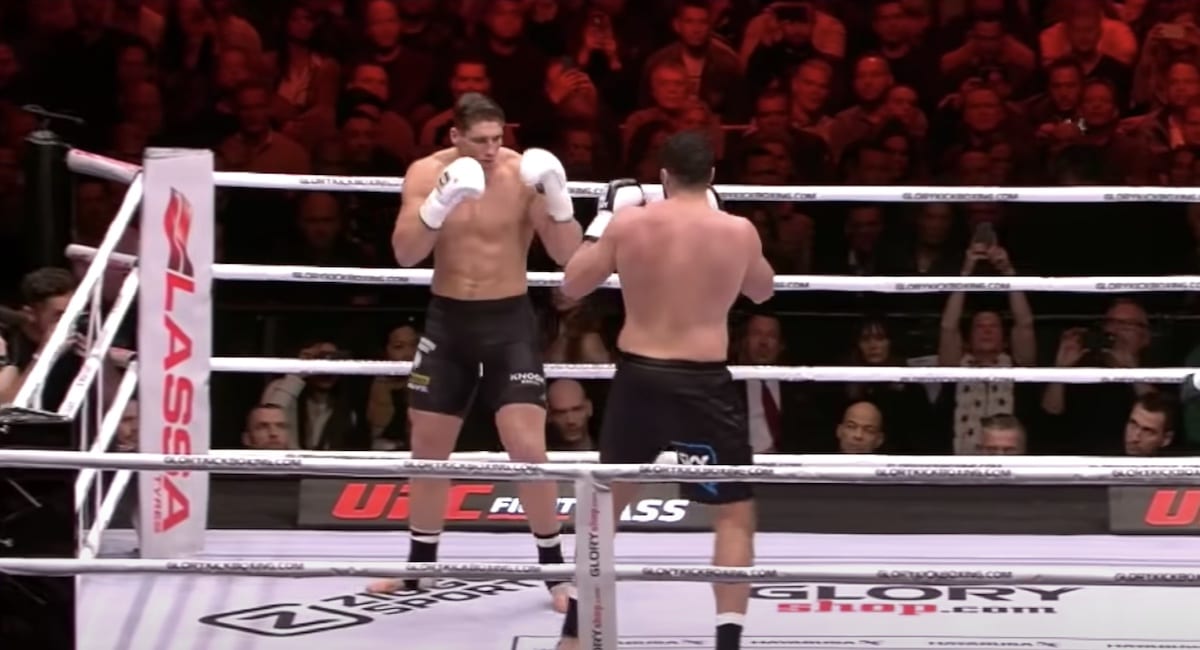Dutch Kickboxing: What is It?
Dutch Kickboxing is is a style of martial art that has become a dominant force in the striking world. Dutch Kickboxing can be a challenging subject to discuss as it is a blend of multiple martial arts into a unique style.
What is Dutch Kickboxing?
Dutch kickboxing is a style of striking which was the dominant influence during the golden age of kickboxing. This era was during the late 1990 and early 2000s centred mainly in K-1 in Japan.
Dutch Kickboxing can be defined as a form of kickboxing which utilizes heavy boxing combinations which end with powerful low kicks. Defensively, due to the large gloves, fighters will typically shell up. Each fighter will normally push with forward, aggressive pressure.
Additionally, Dutch style kickboxing separates itself from other martial arts in the training room. During sparring, Dutch kickboxers will throw full-power combinations at their shelled-up opponent. Once the combo is done, the opponent will then have their turn to offer a full-power combination.

The reason this became a unique style was because in the 1980s there were numerous striking styles competing for attention on the world’s stage. These were Kyokushin Karate, American Kickboxing, and Muay Thai. Dutch kickboxers would take over the world of all three at a certain point. During the golden age of kickboxing, K-1 Kickboxing would be the biggest striking sport on earth which was dominated by Dutch-style strikers.
Dutch-style kickboxing and K-1 Kickboxing at a certain point were synonymous. Today, kickboxing, such as in GLORY, RISE, K-1, or ONE Championship, is still largely influenced by Dutch Kickboxing which was seen in K-1. Not all kickboxers use Dutch style, of course. Dutch style kickboxing is not unique to the Netherlands either and not all Dutch fighters use Dutch Kickboxing.
Kickboxing today is still a hefty mix of styles. Even though Dutch Kickboxing was dominant for a time it did not completely take over the sport. For example, Rise Kickboxing Champion Shiro Matsumoto and former ONE Kickboxing World Champion Superbon Singha Mawynn utilize a Muay Thai style in kickboxing. Additionally, RISE kickboxing Champion Kento Haraguchi and former ONE Kickboxing World Champion Hiroki Akimoto are Kyokishin Karate based strikers.
Muay Thai vs Dutch Kickboxing
Dutch Kickboxing will typically utilize heavy boxing combinations and add low kicks to the end with aggressive pressure. Whereas Muay Thai can often have long periods of feeling out and the punches are typically be used to set up the kick or clinch attacks. Dutch kickboxing is largely not focused on clinch work.
Of course, defining Muay Thai or Dutch Kickboxing in such simple terms does both a disservice. There are many different styles of Muay Thai strikers who do not fit the typical mould of this explanation. For example, Rodtang Jitmuangnon, the current ONE Muay Thai World Champion, does not meet the description at all. With his aggressive, heavy punch combinations it sounds as though one may be describing a K-1 golden era kickboxer.
Thus we enter the issue of describing loose styles in rigid definitions. We have Muay Thai strikers who use punching combinations, Kyokishin Karate fighters winning in kickboxing, Dutch style fighters winning in Muay Thai, and even Dutch kickboxers winning in Kyokishin Karate. For any rule we add as a definition to any style there are loads of exceptions. We are only defining styles in the broadest of terms.
To compare what is the better striking art is a difficult question and it is always followed up with ‘Under What Rules?’ There have been Dutch kickboxers who have lost and won in Muay Thai. Similarly, there have been Thai-based fighters who have won and lost in Kickboxing. A great Dutch fighter in Muay Thai would be Ramon Dekkers and a great Thai fighter in Kickboxing would be Buakaw Banchamek. Both Muay Thai and Dutch Kickboxing can be adapted to each other and MMA.
History of Dutch style Kickboxing
The most important person in Dutch Kickboxing history is a Japanese karate fighter named Kenji Kurosaki. Kurosaki was a student of the founder of Kyokushin Karate Mas Oyama.
In the 1960s, Kurosaki participated in Muay Thai and got knocked out in the first round. Kyokushin Karate did not allow punches to the face during competition. This began his leave of Mas Oyama.
Jon Bluming was a Dutchman who was training under Oyama at the same time and would eventually leave the gym to work alongside Kurosaki. On Mas Oyama, in an interview Bluming said:
“Well, in the typical karate fight there are all the corner referees and the referee and all the whistling and screaming and then they have to stop, go again, then apart and go again, round after round, which is ridiculous. It has nothing to do with fighting.”
Jon Bluming
Kurosaki founded Mejiro Gym which taught a new style of martial arts. Eventually, we would recognize this as an early form of Kickboxing. Along the way, he would teach Toshio Fujiwara who was the first non-Thai to win a Stadium title in Muay Thai. The most important figures he worked with were Dutchman named Jan Plas and Jon Bluming.
Jan Plas was a Kyokushin karate fighter who would learn kickboxing at the Mejiro Gym in Tokyo, Japan from Kurosaki. Plas would eventually go home to Amsterdam and found the Mejiro Gym in 1978 with Jon Bluming. The Mejiro Gym in Amsterdam is considered the birthplace of ‘Dutch Kickboxing.’ A coach there Johan Vos would begin refining the style into something we recognize today.
The Mejiro Gym would have several notable students such as Peter Aerts, Remy Bonjasky, Andy Souwer, Lucien Carbin, and most importantly Ernesto Hoost.
On the influence of Jan Plas, Kyokushin Karate and Muay Thai world champion Lucien Carbin explained:
“So when Jan Plas went to Japan, he wasn’t allowed to train with Mas Oyama. He went walking here and there and he saw Mejiro Gym and went inside. When he returned to Holland he told me that I have to focus on kicking low, because I was a great admirer of Bruce Lee, and I was only kicking high.”
Lucien Carbin
Ernesto Hoost would become a model of Dutch Kickboxing. Mixing high and low combination strikes, punching combination leading to low kicks. Hoost was a force in American Kickboxing, called Full Contact, and would win European titles in Muay Thai and Savate.
Although, his most important contributions to the sport were done in K-1 Kickboxing. His style would largely dictate what Kickboxing is seen as today. The Dutch athlete would win four K-1 Grand Prix World Titles and be nicknamed ‘Mr Perfect.’
Additionally, shortly after Mejiro Gym was founded, a Dutch Kyokushin Karate fighter Cor Hemmers founded the ‘Hemmers Gym’ which also was massively important to the Dutch style of kickboxing. This gym would train notable fighters such as Ramon Dekkers, Nieky Holzken, Alistair Overeem, Bas Rutten, and several others.
The K-1 Kickboxing style would eventually beat out other popular kick fighting forms of that time. American Kickboxing, called Full Contact, did not allow low kicks. Eventually, Full Contact fell to the wayside and K-1 would reign supreme.
One of the legendary trainers of the era, Thom Harinck, discussed the Grand Prix system in an interview and why it became so popular. In an interview, he said:
“I like the K-1 system a lot because then you can really see the real fighter who is able to get to the final. In the first fight you had some pain, in the second fight you had more pain and still you had to fight in the final.“
Thom Harinck
Dutch Kickboxing was founded by Karate fighters who combined aspects of various sports. Muay Thai, Karate, and boxing techniques can all be found mixed in the sport of Dutch style kickboxing.
On the melding of styles, ‘Mr Perfect’ Ernesto Hoost himself explained in an interview:
“Kickboxing itself originated as a development of Japanese martial arts, and specifically Japanese Kickboxing K-1, because this is exactly what was created as a symbiosis of Kyokushin karate and Muay Thai. Kyokushin and Muay Thai have their own deep traditions, these are great advantages in terms of educating the younger generation. And the rules of K-1 allow for the most spectacular fights.”
Ernesto Hoost
Dutch Style Kickboxers
To see Dutch-style kickboxing in action check out the following fighters
- Ernesto Hoost – Four Time K-1 Kickboxing Grand Prix World Champion
- Ramon Dekkers – Eight Time Muay Thai World Champion
- Stefan Leko – Muay Thai and Kickboxing Champion
- Peter Aerts – Three Time K-1 Kickboxing Grand Prix World Champion
- Bas Rutten – UFC Champion
- Gökhan Saki – Kickboxer
- Errol Zimmerman – Kickboxer
- Semmy Schilt – Four Time K-1 Kickboxing Grand Prix World Champion, Kyokushin Karate Champion
- Alistair Overeem – K-1 Kickboxing Grand Prix World Champion, MMA World Champion
- Sergej Maslobojev – GLORY Light Heavyweight World Champion
- Rico Verhoeven – GLORY Heavyweight World Champion
- Nieky Holzken – GLORY Welterweight World Champion
Dutch kickboxing has a fascinating history. Dutch Kickboxing and Muay Thai are not rivals but instead use the best technique of the others craft. Dutch Kickboxing as a striking style has not gotten less popular in recent years. As a force of martial arts, it has remained strong.

